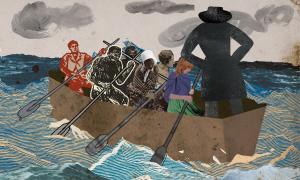text
Informational
Marcus Garvey and the Universal Negro Improvement Association
This segment examines black nationalist leader Marcus Garvey and his organization, the Universal Negro Improvement Association. Best known for his leadership in a "back to Africa" movement, Garvey's ideas would influence later black nationalist thought.
July 8, 2014

